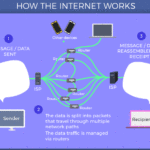What is Data Science: Lifecycle, Applications, Prerequisites and Tools
Data science is an essential part of many industries today, given the massive amounts of data that are produced, and is one of the most debated topics in IT circles.…
Introduction to Matplotlib and Seaborn
In this Blog, I will be writing the introductory stuff on matplotlib and seaborn like what is matplotlib and seaborn, why they are used, how to get started with both…
Build a Production-Ready API with Rate-Limiter in 15 minutes
This post is a tutorial on how to build a production-ready API with a rate-limiter, in 15 minutes and with 100% reproducibility. You will know: how to add a rate-limiter…
Every Python Programmer Should Know LRU_cache From the Standard Library
You are just one line of code away from speeding up your functions by using simple caching functionality. The Python standard library comes with many lesser-known but powerful packages. For…
Python utility function: retry with exponential backoff
To make a setup more resilient we should allow for certain actions to be retried before they fail. We should not "hammer" our underlying systems, so it is wise to…
Retry decorator as Python utility to protect unexpected one-off exceptions while calling APIs
Implementing a retry decorator can protect you against unexpected one-off exceptions that caused by by a temporary drop of internet-connection, too many concurrent writes, a temporarily unresponsive source system, or…
How to use pip (Install, update, uninstall packages, show, list, freeze, requirements.txt) from basic to advance
pip is the package installer for Python. It is used to install, update, and uninstall various Python packages (libraries). This article describes the most basic operations of pip.
Pip Install: Install and Remove Python Packages
Pip install is the command you use to install Python packages with the Pip package manager. If you’re wondering what Pip stands for, the name Pip is a recursive acronym…
Python Pipenv: A Better Package Manager
Many people prefer a Python tool called pipenv instead of using pip install and virtualenv separately. It’s up to you to decide which method you like better. Perhaps you work…
Venv Python – A complete tutorial on Virtual Environments in Python
Virtual Environment is a kind of a container which runs specific version of Python and its modules. And it is used in the cases where you are working on two…






